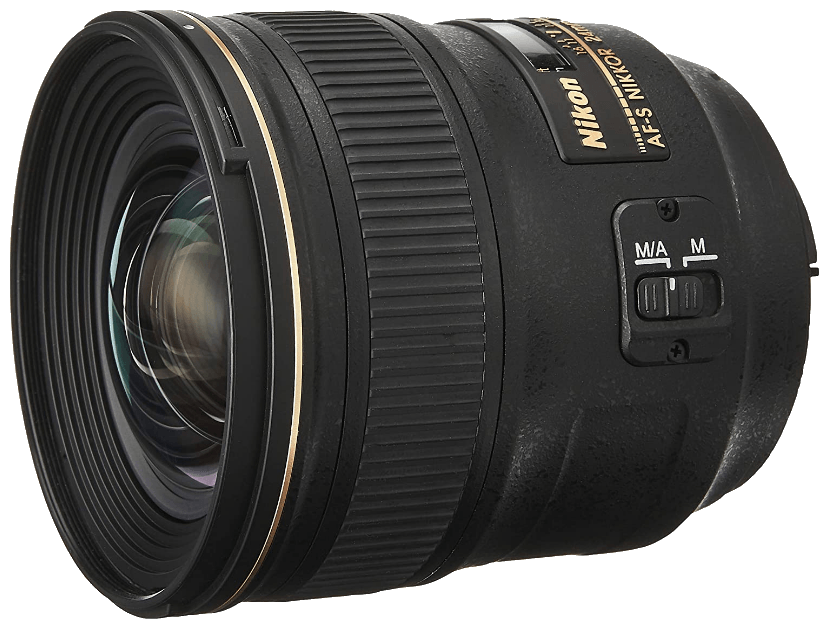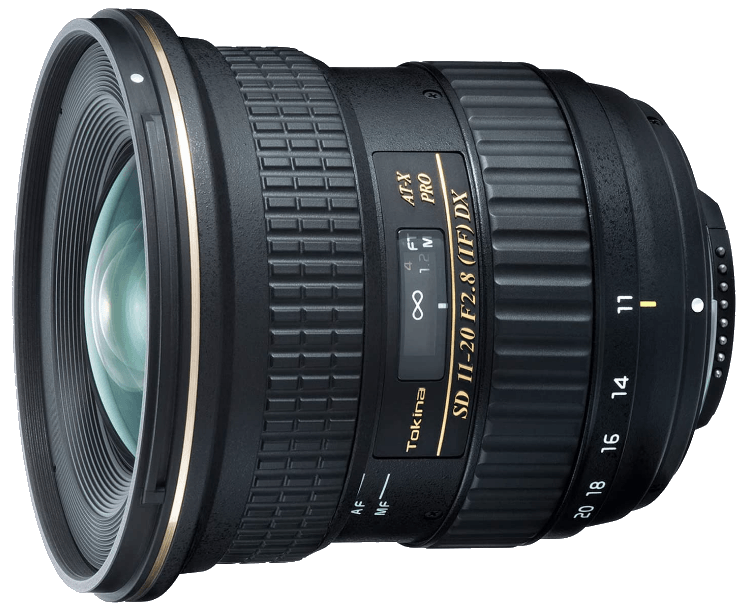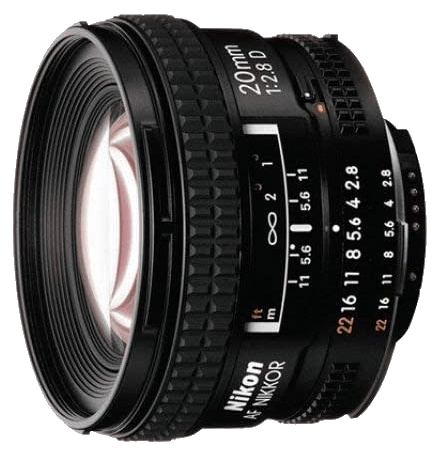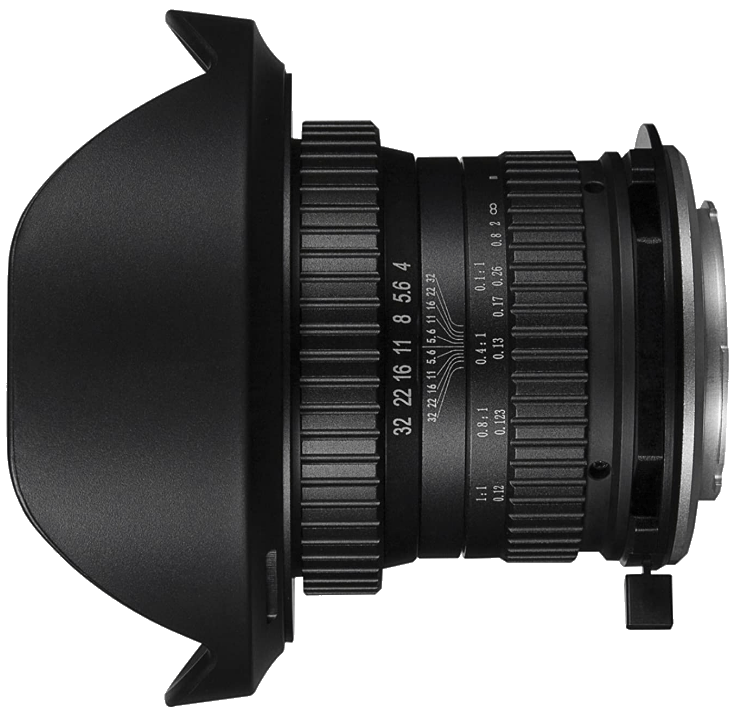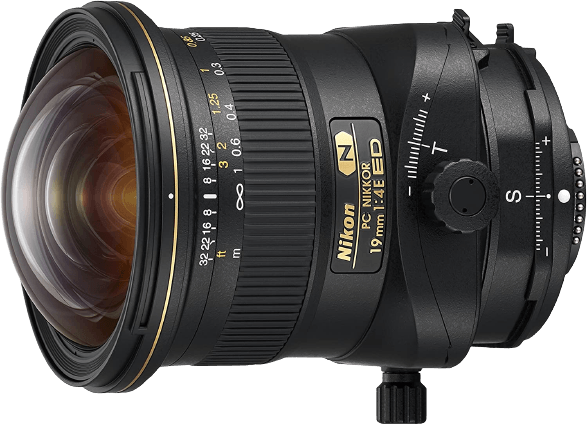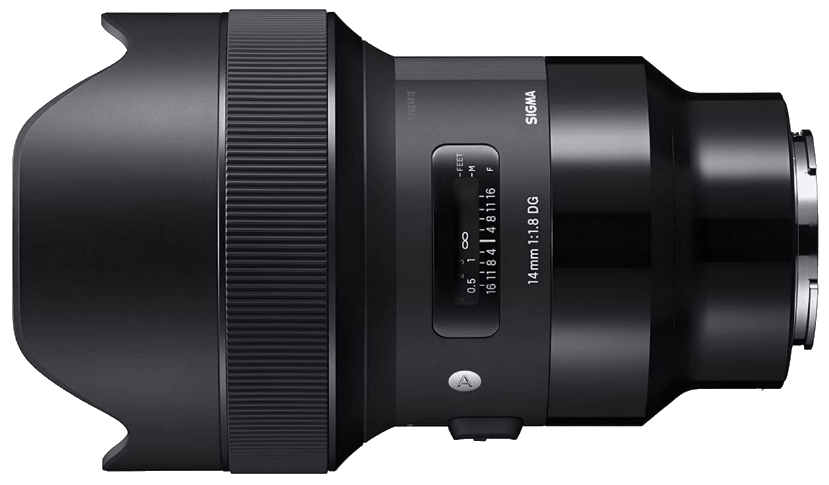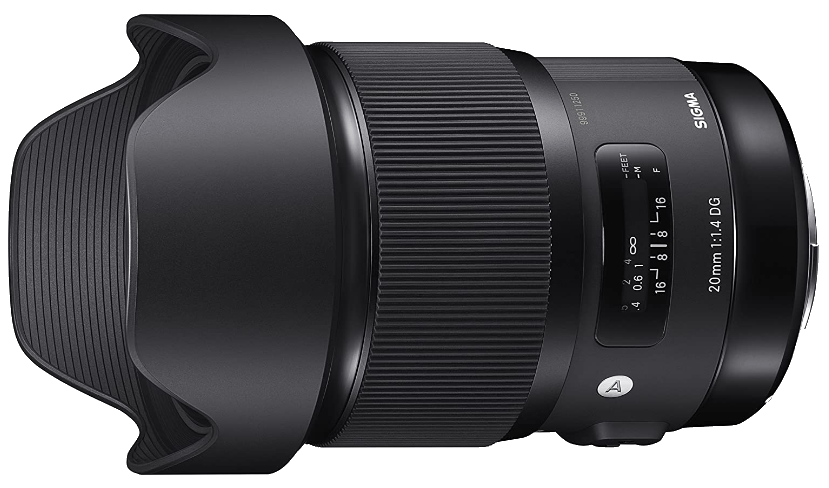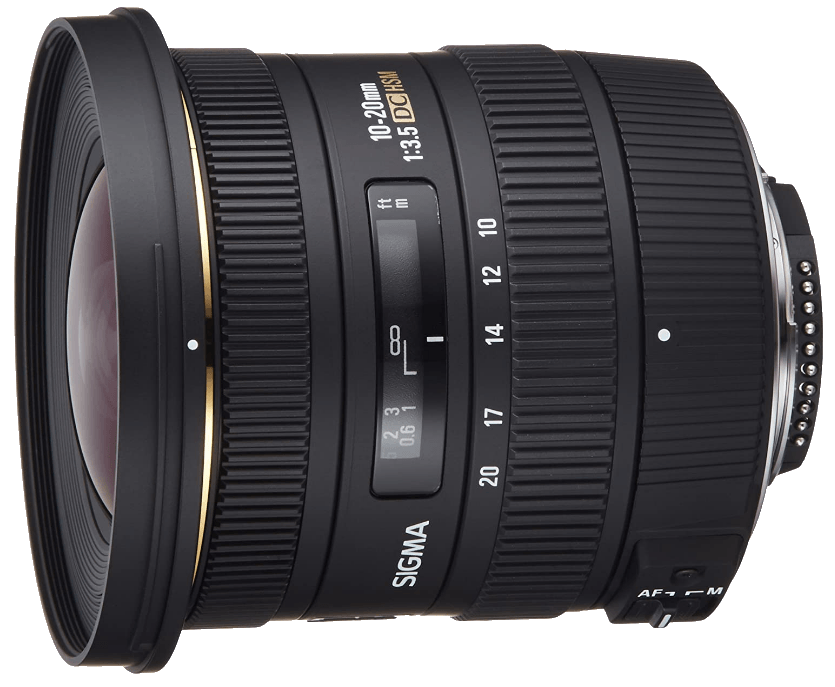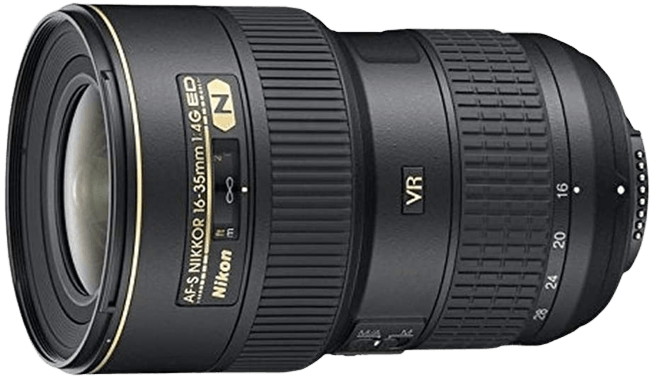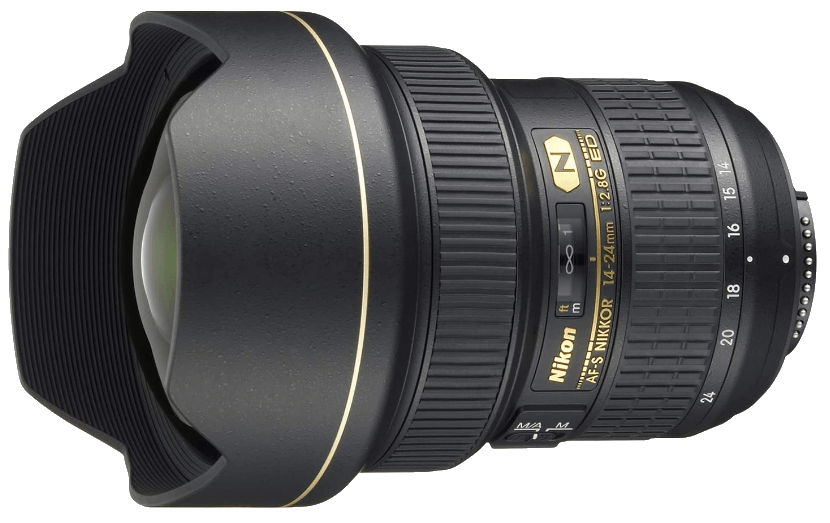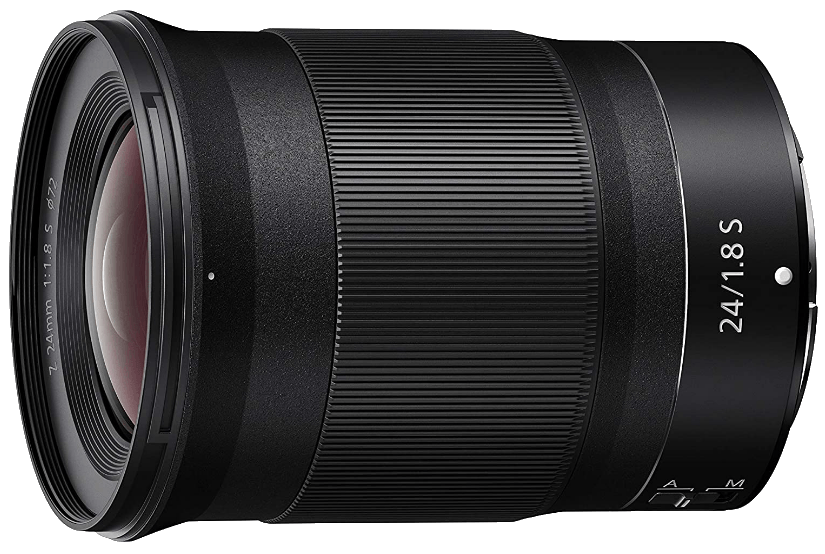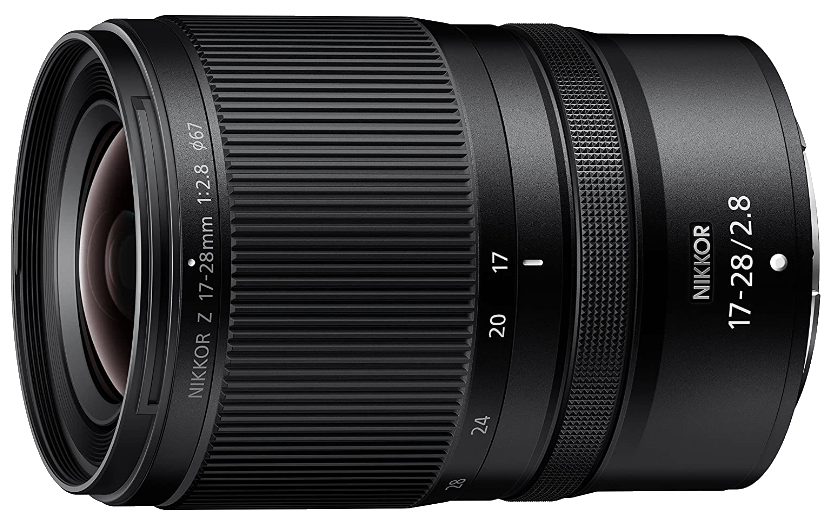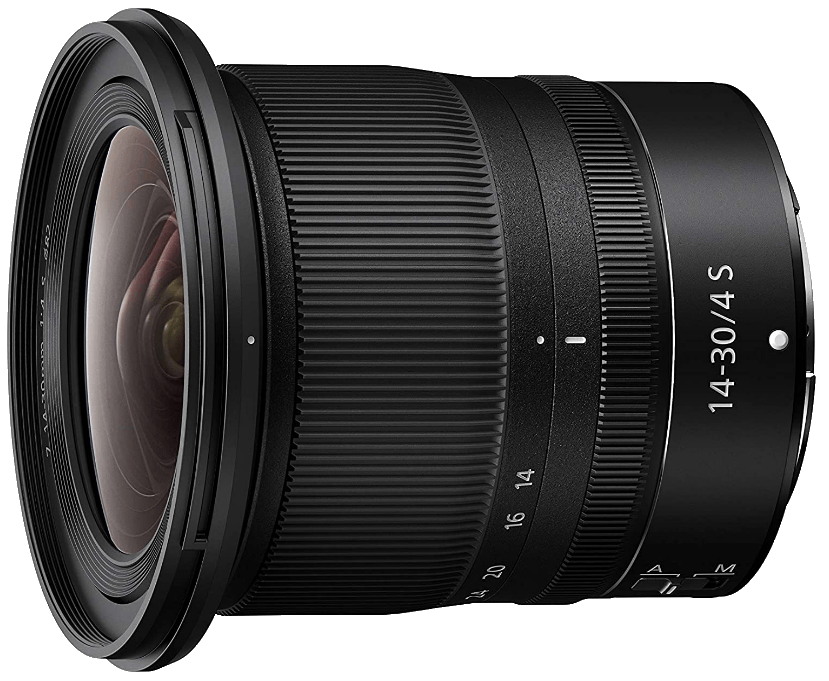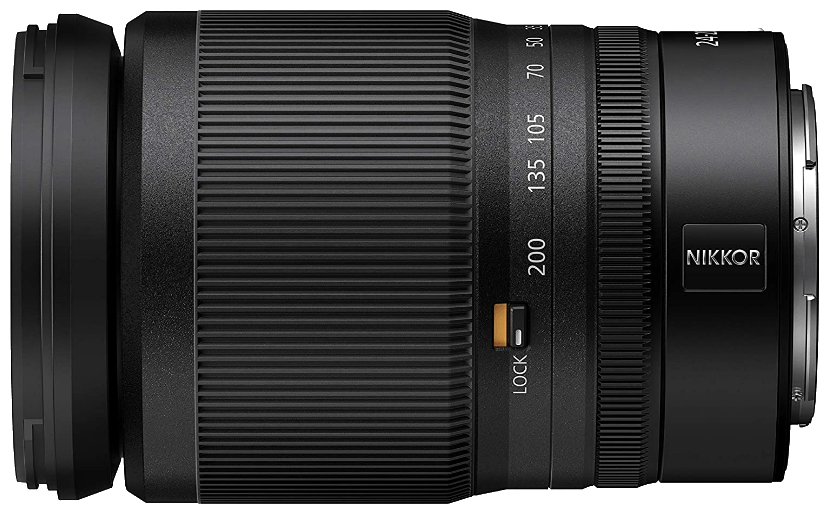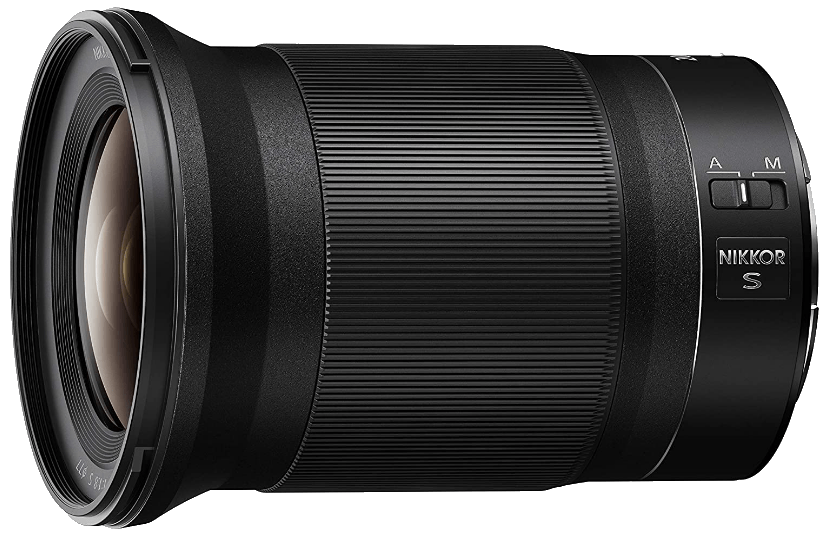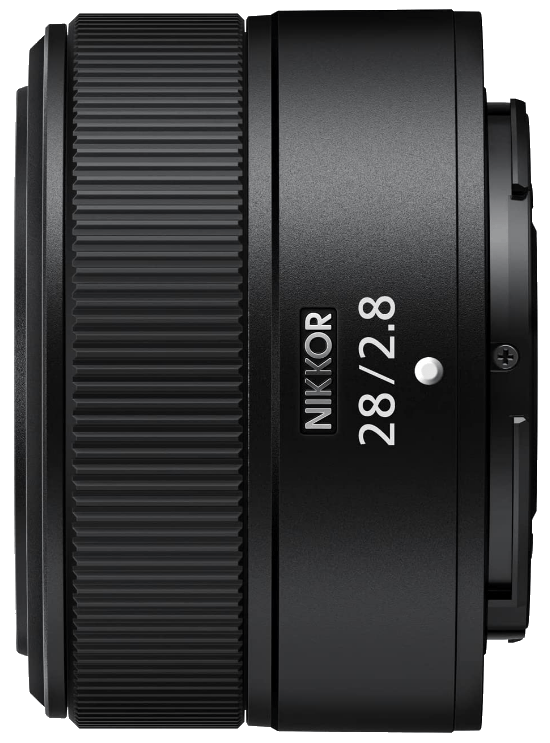We compared a lot of wide-angle lenses for Nikon cameras. The review looks first of all at Nikon F-mount lenses, for both DX (APS-C) and FX (full frame and 35mm) cameras. We look at zooms and prime lenses. Then we consider a selection of Nikon Z-mount lenses. All of these work on full frame Z-mount cameras. For our top pick, we’ve chosen a reliable, all-around lens. The Nikon AF-S 24mm f/1.4G is a high-quality, professional lens with exceptional image quality. Don’t worry if you have a Z-series camera. All F-mount lenses can be adapted with the Nikon FTZ II adapter. [Note: ExpertPhotography is supported by readers. Product links on ExpertPhotography are referral links. If you use one of these and buy something, we make a little bit of money. Need more info? See how it all works here.] You’ll find the review for the different mount types here:
What is the Best Nikon Wide Angle Lens for DSLRs?
We’re going to look in detail at the best wide-angles for your Nikon DSLR. But first of all, here is a table of all the lenses in the review. Unlike Canon DSLRs, Nikon APS-C lenses will fit on their full frame cameras. But there will usually be some vignetting or cut-off. FX lenses will fit on DX cameras, but the focal length will be different because of the crop factor. Don’t worry, we’ve included the conversion where necessary. So let’s look in more detail at these wide-angle lenses for Nikon DSLRs. The Nikon 24mm f/1.4 is the most versatile if you’re looking for a general-purpose wide-angle prime. It has all of the best Nikon qualities, including a solid plastic and metal body, top optical performance, and great autofocus. Its fast aperture makes it ideal for shooting moving subjects or shooting handheld in low-light. This is a lens that a lot of professionals use, so if you’re aiming for the very best, it’s the right choice for you. This wide-angle lens is the little brother of the 16-28mm. It fits DX cameras, yet you can use it on full frame with compromises too. At 16mm and above, it covers the FX sensor as well. On the DX lens market, though, it represents a class of its own. There’s no other zoom that offers f/2.8 aperture throughout its whole range (except for the previous versions of this very lens). The Tokina 11-20mm f/2.8 improves slightly on them in terms of image quality. Also, this is the first to go up to 20mm instead of 16mm. The 4mm of extra reach can help you out in a lot of situations. Construction and materials are the same as on the 16-28mm. However, this lens is not held back by the lack of a filter ring. You can use 77mm screw-on filters. For a DX lens, its price is not the lowest, but in our opinion, it’s still an outstanding offer. This is our favorite DX lens for Nikon. This Nikon 20mm f/2.8 wide-angle lens will attract you with its size. Put this on your camera, and you’ve got an excellent little kit. You can use that to your advantage in street photography or when traveling. It’s designed for full frame sensors and film. Image quality is good enough. Though it’s not razor-sharp at f/2.8, it will satisfy most of your needs. Construction-wise it’s also not the best. The main material is plastic. But for a lens of this size, that is fine. Introduced in 1994, this is possibly the oldest lens on this list. But it holds its value incredibly well. It remains a feasible choice for today’s advanced DSLRs. This Laowa 15mm f/4 macro lens combines a wide angle of view with 1:1 macro capability, that makes up for very special photos. The lens is superbly built and designed. Take a glance at it and you can tell that it’s an extraordinary piece of glass. Image quality is fantastic, it’s what you expect from a modern prime lens. There is minimal distortion, it only comes out when you shoot extreme close-up. The Nikon PC 19mm f/4 is also a very special professional lens, the most expensive one on our list as well. With this, you can control your image in ways that even your eyes cannot see. The shift function enables you to change the perspective of your photo. This way you can correct for parallel lines. Additionally, you can modify your focal plane with the tilt knob, which creates sharpness and blur in unusual places. If you’ve ever seen a “miniature world” effect, it way either created by a tilt-shift lens or in Photoshop. Of course, image and build quality are outstanding, but this what you expect. If you’re planning to make a serious career with architecture photography, this is the lens for you. The Laowa 12mm f/2.8 lens gives you an ultra-wide angle with a fast aperture. Its main selling point is “Zero Distortion.” Indeed, distortion is virtually non-existent. This is really impressive for a lens as wide as 12mm. For its price, it is not an absolute bargain, but pretty good value. It gives you stunning images. Sigma’s 14mm f/1.8 is an offering from their Art line that is the astrophotographer’s dream. It boasts an ultra-wide angle of view with a fast aperture of f/1.8. That makes it a unique lens on the market and an ideal choice for you if you’re shooting astrophotos or low-light action. The lens is bulky and heavy. Its front element sticks out forward, so filters are hard to install. In terms of construction, it features all the Art design elements and materials that makes it a sturdy lens. The photos you get with it are razor-sharp even at the widest aperture. It is very rare that you can get notable background separation with an ultra-wide-angle lens. But with this one, it’s possible. You get a very special lens from Sigma. You have to pay the price for it, but it is reasonable. If you’re searching for the ultimate value, look no further. This small Rokinon 14mm lens (or Samyang, depending on where you live) is a real bargain. It features all-metal construction and excellent image quality, comparable to the Nikon 14mm f/2.8 lens at a fifth of the price. There are a few tradeoffs, though. First, the common problem of filters. You can’t screw them on, but third parties offer holders for the lens. The lens is manual focus and aperture only. That means you have to set your focus and aperture on the lens, and not on the camera. Also, there is no metadata transmitted. You won’t find the f-stop, the focus distance, or the lens type embedded in your photos. Another Sigma Art lens makes it onto our list. This one is the Sigma 20mm lens you can find with an f/1.4 aperture. It represents great value and features top-notch optics. Construction and optical quality meet the high standard of the Art series. The lens is big, bulky, and rather front-heavy. It is extremely versatile. The front element is bulbous, making it hard to use filters. Otherwise, this lens is great for general use. Sigma offers you a very usable and reasonably priced lens for your Nikon DX camera. Its most attractive feature is the constant f/3.5 aperture throughout the zoom lens range. This makes it ideal for video work. You can also use manual mode easier, as you don’t have to reconfigure your exposure every time you zoom. Image quality, while not the best, is acceptable. You can shoot detailed, colorful images with this lens. Autofocus is quick and accurate. Sigma’s HSM system works well. The Sigma 10-20mm f/3.5 lens is made out of plastic, which brings down durability. But it makes the lens lighter. If you’re starting out with a DX Nikon camera (for instance, a D3300), this an inexpensive and easy entry to the world of wide-angle lenses. If you’re looking for a wide-angle zoom lens for your DX camera made by Nikon, the Nikon 10-24mm will be your choice. The lens improves on the previous Sigma lens in image quality. It delivers sharp images with good contrast. It also improves on the zoom range, 24mm nears what some consider a “wide normal” angle of view. Build quality is slightly better. It’s plasticky but more robust. With this wide-angle zoom lens, you’ll have to sacrifice the constant aperture. Thus, we don’t recommend this lens for video work. You’re paying a higher price, but you’re also getting slightly better quality with this lens. If you’re planning to stick with DX cameras for a while and want a great all-purpose wide-angle zoom, this is a great option. In terms of image quality and usability, the Sigma 12-24mm f/4.0 lens is at a comparable level to top-of-the-line Nikon glass. It is built of metal and plastic, feeling solid and heavy in the hands. On full frame format, this lens is ultra-wide. So wide, that even if you put it on a DX camera, it still remains very wide. If you currently have a DX camera, but you’re planning to upgrade to FX, this a great choice. You won’t have to look for a new lens and will get more out of your existing Sigma 12-24mm Art. Yet, you may find one downside. Due to the bulbous front element, you can’t attach filters easily. There are solutions, but they are hard to set up and inconvenient. If you’re planning to use your wide-angle zoom lens with filters, we recommend taking a look at Nikon’s own 16-35mm F/4 VR. This is the widest lens you can get for DX format. The Sigma 8-16mm gives you the same angle of view on DX as the 12-24mm on FX. It delivers you sharp, detailed images, with decaying resolution only towards the extreme corners at 8mm. Though not a part of the Art line, Sigma constructed this lens very sturdily. Mounting filters is hardly possible because of the big front glass. Also, the aperture is relatively slow. It will require you to use higher ISO settings or slower shutter speeds. However, the reason you get this lens is its ultra-wide-angle view. There is really no other way to achieve that on DX. If you don’t mind the aperture and the filters, you get fabulous value with the 8-16mm Sigma lens. Tokina is one of the lesser known lens manufacturers, but their products represent excellent value. The Tokina 16-28mm f/2.8 is no exception. This lens offers you a constant f/2.8 aperture at a very reasonable price. Picture quality is outstanding. In its class of fast wide-angle lenses, only Nikon’s 14-24mm surpasses is. With all-metal construction, it feels comfortable in your hands. The autofocus could be faster, but it is accurate. Similarly to previous lenses, filters are a problem on this one as well. However, it’s the price of this wide-angle lens that is hard to beat. Coming in at only a third of the cost of the Nikon 14-24mm, it’s undoubtedly a bargain. Do you want a lens that is perfect for serious landscape photography? Are you planning for a lot of video work? Or just want a great all-rounder wide-angle zoom? This Nikon 16-35mm is the ultimate choice for you. It excels in image quality, delivering corner-to-corner sharpness and remarkable contrast. Add to that the possibility to use screw-on filters and this lens becomes the tool of the professional landscape photographer. The constant aperture of f/4 and the image stabilization (VR) also make it an excellent asset for video creators. It is constructed from top-grade plastic, which makes it lighter and keeps it well-protected. You get great value for the price. This Nikon 14-24mm lens is their ultimate wide-angle zoom lens for you if you’re willing to pay the price. It is bulky, heavy, sturdy, and does not compromise on any front. Image quality is the best on the market, photos are razor-sharp throughout. It’s so good, in fact, that this is the only Nikon lens we have seen adapted onto a Canon camera. If you want to exploit its full functionality, you have to stick with Nikon bodies, though. Autofocus is quick and snappy. This is a professional lens, and with that comes professional pricing. However, if you want the absolute best out of your wide-angle zoom lens, there is no other option.
What is the Best Nikon Wide-Angle Lens for Mirrorless Cameras?
If your Nikon camera is a mirrorless one, then these are the lenses to look at. It’s a more modern camera type, so the choice is more limited. Remember, most F-mount lenses can be used on a Z-mount by using an adapter. First of all, here’s a round-up of all the lenses we’re looking at. Now let’s look in detail at these Z-mount lenses. This Nikon 24mm lens offers you the very engaging view you get from that focal length, even in low light. Image stabilization has had a massive impact on low-light photography. But it can’t do anything about subjects that move. A fast lens helps. So if you are taking low-light indoor photos, maybe at a wedding, then this is a bonus. And 24mm is a great length for that. The beauty of lenses like this one from Nikon is that you can select what its single ring does. It is mainly for focus. But if you need to switch aperture or ISO on the fly, you can tell the camera that this is what you want the ring to adjust. With robust construction and rock-solid optics, this is a great choice for the professional who works in demanding light. Although the Nikon 17-28mm lens doesn’t quite go to the much-loved 16mm focal length, it does include 24 and 28mm. Both of these are popular as alternative standard lenses. And 17mm gives a fresh view. The constant f/2.8 maximum aperture is obviously the other stand-out feature. Manual focus is always available, unless you choose to program the control ring differently. This is another handy feature. Image quality is superb. And the lens will serve well in a whole range of challenging lighting situations. The Nikon Z 14-30mm lens matches mirrorless cameras perfectly. It is compact, lightweight, and delivers pin-sharp images. Autofocus is fast and almost silent. The extended zoom rage compared with the previous lens makes a world of difference. 14mm is, some people say, ultra-ultra-wide. But Nikon’s camera settings mean that your straight lines will be straight. The lack of distortion and sharpness combine to give stunning possibilities. As with other Nikon Z-mount lenses, the second lens ring is programmable to suit your needs. You might be tempted to use the Nikon Z 24-200mm and never take it off your camera. From 24mm all the way to 200mm, this has you covered. From indoor shots to many sports, you’ll be equipped. Up to five stops of image stabilization help to make up for the relatively slow maximum apertures. This lens fits the philosophy of Nikon’s mirrorless cameras. Take it anywhere and always be ready no matter what the subject matter or situation. And it delivers sharp, distortion-free photos. And the price makes it very attractive as well. This should definitely be on your list of new lenses for your Nikon mirrorless camera. If you need to take wide-angle photos in low light, especially of moving subjects, the Nikon Z 20mm f/1.8 is a great lens. Its f/1.8 maximum aperture can mean the difference between blurred or sharp subjects. Or unusable ISO settings or something more reasonable. It’s also a good lens for astrophotography and nighttime street photography. It isn’t small, by any means. Nor is its price, for that matter. But it delivers crisp, clear, bright images in the most demanding of situations. For such a well-made lens from Nikon, this is a great value wide-angle. The Nikon Z 28mm f/2.8 isn’t the fastest in the world, but if you want a wide-angle lens for everyday always-on-the-camera lens, this is a good choice. Even wide-open, it delivers punchy, sharp images. Even the bokeh, which is not always a strong point for wide-angle lenses, is good. If you need to tweak the very reliable autofocus, then you can use the focus ring at any time. If you want a lens that matches the retro aesthetics of your Nikon Z fc, then you can get this same 28mm lens in “SE” style. Either way, this is a great little lens for capturing that wider-than-normal view.
Conclusion
Wide-angle lenses really do open up new ways of seeing the world with your camera. Choosing the right one isn’t always easy, but all of these lenses perform well. It’s just a case of matching needs and budget. For a perfect blend of quality and price, we like the Nikon AF-S 24mm f/1.4G.
